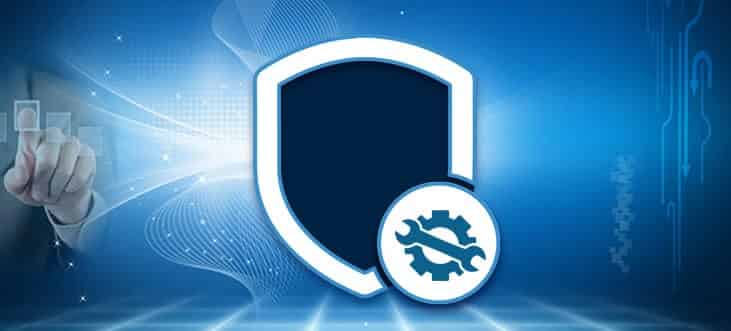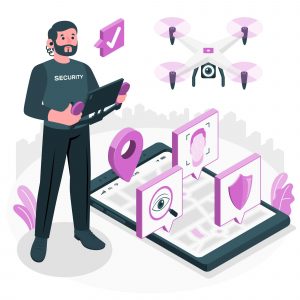Top Trending Threats For Business Information Security
Updated on June 4, 2024, by Xcitium

In general, all the current updated business information security threats are dangerous and lethal for business companies. As you can’t take cybercriminals for granted. Today, we are standing at a stage where cybersecurity leaders have started fearing AI-based business information security threats. So, we can get the indications plus data on how destructive these menacing attacks can be.
Time to talk deeper about the commonly found cybersecurity threats that are harmful to small and successful enterprises. Although it is also essential to learn about the trending threats that can be damaging to the overall infrastructure of business companies.

5 Common Business Information Security Threats
It has become obvious that security breaches are considered the most exploitative for companies. As through data breaches, cyber attackers can hijack the endpoints, delay the online working of cloud networks, leak confidential data, and demand a whopping ransom payment. However, if we delve further into the dark realities of business information security threats, then here are the foremost common business security threats that can create ghastly and harmful situations for business firms.
- APTs – The Nightmares Of Endpoints & Cloud Networks
Advanced persistent threats (APTs) used to be the violating practices of smartly anonymous hackers. Hence, they usually were blasted with well-planned destructive motives. As they ultimately enter into endpoints and remain there for longer periods in order to keep the system dysfunctional. Now, after the birth of AI (Artificial Intelligence) and advanced technologies, this cyber-attack has enhanced into a widespread practice becoming deadly for the business information security of companies.
2. Internal Threats – The Fatal Insider Malicious Activities
Companies shouldn’t always trust their internal staff because endpoint management and security issues result often from intentional or unintentional workforce errors. During the execution of this attack, not just well-established firms but fresh startups can also be the target victims. So, internal threats are common, and companies should never take their human errors as regular vulnerabilities that need patches.
3. Phishing Traps – Threats That Leads to Malware & Ransomware
Email scams, QR code traps, and other jackpot-winning spoofing have become successful in fooling educated professionals. By searching a few keywords like “cyber scams cases or phishing traps in 2023 and 24”, you can get shocking stats about this type of deadly cyber-attack. So, being extra careful about this most common cybersecurity threat is essential. In fact, phishing traps are the core practices that lead to malware errors and ransomware demand scenarios dealing situations.
4. DoS Attacks – The Workflow Stoppers & Malware Attack Blasters
Delay of Service (DoS) can be considered more common here. Because endpoints and cloud network users often face delays while ruining their software and digital tools. However, you never know how smartly cybercriminals can play with your business infrastructure by disturbing your office workflow and attacking it with malware payloads. The DoS attacks are well-implemented blasts that slow the services of targeted victims and use that bog down situations for personal cyberspace-violating actions.
5. MitM Attack – IT In Data Theft & Communication Complications
There can be many names of MitM (man-in-the-middle) attackers. Such as network sniffing, pocket tempering, and interception attacks. Thus, the purpose of all these attacks is the same: to breach the classified communication between two parties, disturb the data transmission, and steal whatever is important. In simple, MitM attacks allow the unknown resource to record the data of target victims and use it for illegal practices.
5 Top Trending Network Disturbing Business Information Security Threats
No matter how dangerous the commonly found threats can be; hence, as professional hubs, companies should also have knowledge of hot topics and popular ones (cyber-attacks). Just like in past years, 2024 also will be surrounded by more updated payloads that magnetize data and steal millions from successful plus fresh business companies.
Furthermore, along with already discussed common threats, business hubs should also have a proper alteration planning for premier emerging ruinous cyber-attacks. So, let’s go through with some of these compensatory business information security risky blasts.
- Cybercrime As A Service
The CaaS (Cybercrime-as-a-service) can be considered a broader threat to business companies. Because all the harmful cyber-attacks for available online accounts are being provided as a corporate service. Unfortunately, the demand for CaaS has been increasing through the years and these types of service-offering approaches are globally famous on the dark web.
2. Cloud Network Hijacking Attacks
The scenes of data loss can be normal for users. However, system hijackers should not be a common factor for professionals using a cloud storage network. Because the practice of cloud network hijacking has been adopted by cybercriminals to steal the available data and use it for ransom payments.
3. Deepfake (AI-Based) Attacks
Fraud through email spoofing was an unwanted scenario for business companies. Now, after the emergence of deepfake technology powered by AI, corporations have to be extra careful while trusting collaborating resources. It simply uses video and audio mediums to misinform and scam the targeted parties.
4. IoT-Related Vulnerabilities
Hardware devices and digital software tools have higher chances of being vulnerable. Currently, users blindly trust every downloading software and start utilizing them by inputting data. However, IoT-related vulnerabilities such as insecure update mechanisms, botnets, and outdated components are trending in the market. Therefore, companies should hire the best people if they want to keep their cyberspace and the security of their workforce protected.
5. WFH & BYOD Security Issues
Recently, it has been observed that professionals have become more demanding for the allocation of WFH (work from home) and BYOD (bring your own device) policies in workplaces. Although many of us don’t know that the allocation of these both models has brought network exploitation scenarios for companies. As the chances of shadow IT, internal threats, interspace hijacks, and social engineering increase after following the WFH and BYOD models.
Xcitium – The Top Trending Brand For Business Information Security Threats Alteration
Every new growth invention and work-life balance is always worth appreciating. But for each advancement, there should be an updated business information security policy. That’s why Xcitium invites you to hire our IT security and infrastructure management expert team to keep your cyberspace updated and free from other dangers just like the above shared cyber threats.
Xcitium, the premier cybersecurity and IT monitoring service provider welcomes small plus giant business companies to get our convenient consultancy and acquire their customized managed IT management and security package deals.












